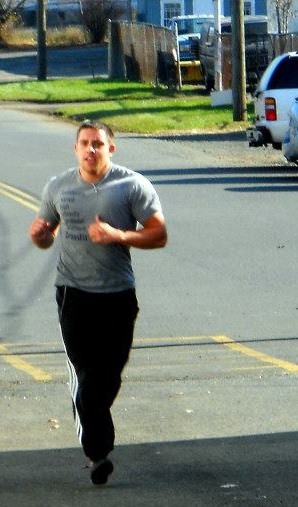Easing Back into CrossFit
by Erik Castiglione
Greetings Relentless Family! We’re now more than halfway through September, which means that Labor Day has come and gone and the school year is back in full swing. Sadly, this means no more beach weekends or vacations. Some of you had great summers with numerous trips and vacations. Some of you may have taken the entire summer off from doing CrossFit to focus on other things: family, travel, or maybe a new fitness endeavor. Whatever the case, some of you may be looking to once again delve into this crazy CrossFit thing we do. If this sounds like you, and you’ve had significant time off from training, then please keep reading. There a few important things to keep in mind when easing back into CrossFit to make sure that you stay healthy.
Scale!
For most of you, this is pretty obvious. When we’ve taken a lot of time off, we’re pretty well aware that our strength levels have probably dipped a little. Most of you are very good about scaling the weights in our workouts upon your return, and for this I commend you. Keep it up! Unfortunately, there is another, often ignored method of scaling: volume!
As a group, we CrossFitters frequently want more. It’s a common train of thought in pretty much every field: if some is good, more must be better. Many of our movements require a high degree of skill, so it’s normal to want to practice them. Unfortunately, the human body can only handle so much, as I wrote about here. The goal of each day in the gym should be to hit the desired training stimulus, and call it a day. When you’ve taken an extended period of time off, it requires less volume to hit the desired stimulus, because your body starts to decondition after about 2 weeks.
There are a couple different ways to scale volume. First, you can scale the overall volume of the entire workout. For instance, if the workout is 5 rounds of some godawfully long combination of movements (think Eva: 800m run, 30 heavy swings, 30 pull-ups), we can scale the number of rounds to 3 or 4. Or, we could set a time cap for you and turn it into an AMRAP. Maybe you can get through 3+ rounds of Eva in 30 minutes.
Another way to scale the volume is to look at which movements are going to tax you the most, and scale the number of reps for them. For example, if you haven’t been running in months, you’re going to be at higher risk for shin splints than normal if you don’t ease back into it. Keeping with the Eva example, maybe you scale the runs to 400m instead of 800m. Or, maybe you run the first round or two, and row the rest.
You should also be careful with grip intensive movements upon your return. Your grip strength on a particular day is a good indicator of how well your nervous system is operating. If you completely fry your grip, you end up really taxing your whole system (this is why deadlifts seem more exhausting than back squats). Movements like deadlifts, cleans, snatches, pull-ups, kb swings, etc. may need to be done in smaller amounts until you’re back to regularly training. This is okay! Train smarter, not harder.
Mobilize and Recover!
If you’ve been inactive, especially if you’ve been sitting on some beach sipping piña coladas (we’ve all been there), your mobility is going to be lacking. Don’t worry, it’s only temporary until your body gets used to squatting and moving again. It’s important to get to class early to roll out and stretch out for the movements you’ll be doing in class that day. If you’re feeling particularly stiff in a certain part of your body, focus on that problem area too. For more advice on how to mobilize, check out the articles we wrote earlier this year on the subject (part I and part II).
It’s also going to be important to recover outside of class. The four items on your recovery checklist should be sleep, hydration, food, and mobility. Make sure you get enough sleep – this means 8 hours of sleep per night for most of you. If you can’t swing that, then try to accumulate 8 hours with a nap during the day. For hydration, you should be drinking a minimum of 1/2 your bodyweight in ounces per day. Nutrition is its own subject, so all I’ll say for now is to eat something green and get some protein with every meal. To mobilize at home, make sure you move! If a particular movement made you sore (think push-ups), moving through that same range of motion is good way to flush out the soreness (do a couple push-ups to downward dog, stretch your chest, etc.). Foam rolling at home is also a good option. Foam rollers and other mobility tools are pretty widely available now, and it’s worth the investment. For great information on The Best Foam Rollers check out this article from BarBend.com: https://barbend.com/best-foam-roller-reviews/.
Listen to Your Body!
If you’re feeling beat up, take a rest day. I know it can be tempting to dive headlong back in to CrossFit when you’ve been out for a while. Part of this is because we want to punish ourselves for taking too much time off and part of it is because we want to get back to where we were before our break as quickly as possible. I’ve been there too. But just remember, if you go too hard from the start, you’re going to be too sore to continue, and this will force you to take even more time off. PLEASE, take it easy to start, and I promise that you’ll get back to where you want to be faster in the long run.
See you in the gym,
Erik


